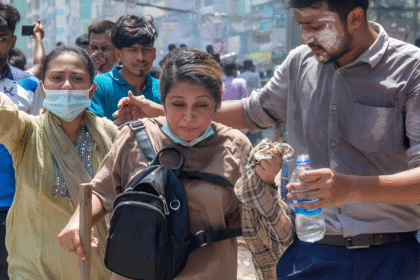The State of Airports in Pakistan
Pakistan’s aviation landscape has been historically plagued by a multitude of challenges. From infrastructural decay to regulatory hurdles, the factors contributing to the operational status of airports are complex and multifaceted. Currently, the country boasts a total of 33 airports, with eight of them facing operational challenges that have rendered them non-functional. These closures have created a ripple effect on domestic and international travel, hampering connectivity and economic growth.
The eight non-operational airports include several strategically located facilities that once served as critical links between urban and rural regions. Their inability to provide services has raised concerns among local populations who rely on air travel for business, education, and healthcare.
Economic Implications of Non-Operational Airports
The impact of non-operational airports extends far beyond the immediate inconvenience for travelers. Financial losses are soaring as a result of reduced air traffic, leading to decreased revenue for the PCAA. These losses have ramifications for various stakeholders, including airlines, local businesses, and the broader economy. When airports are closed, local economies suffer from the loss of tourism and commerce, which can lead to higher unemployment rates and reduced quality of life.
Revenue Loss for the Pakistan Civil Aviation Authority
The PCAA relies heavily on airport revenues to maintain and operate facilities. Non-operational airports mean a substantial decrease in passenger traffic, which translates to lost ticket sales, parking fees, and airport-related services. This revenue shortfall places additional pressure on the PCAA to manage its existing resources, potentially leading to cutbacks in maintenance and operational funding for remaining airports.
Effects on Local Businesses and Employment
Local businesses that rely on air travel for logistics and customer access are particularly vulnerable when airports become non-operational. Retailers, hotels, and service providers may see a significant decline in customer traffic, impacting their revenue streams. This, in turn, affects employment levels in those communities, leading to job losses and decreased economic activity.
Reasons Behind Airport Closures
Several factors have contributed to the current state of non-operational airports in Pakistan. Understanding these reasons is essential for developing effective strategies to revive the aviation sector.
- Infrastructural Decay
Many of Pakistan’s airports suffer from outdated infrastructure, making them less appealing to airlines and travelers alike. Insufficient facilities, such as aging runways, lack of maintenance, and inadequate passenger services, contribute to the decision of airlines to avoid these locations.
- Regulatory Challenges
Regulatory hurdles also play a significant role in the operational status of airports. Bureaucratic inefficiencies and outdated regulations can deter investment and modernization efforts, making it challenging for airports to remain competitive in an increasingly globalized aviation market.
- Security Concerns
Pakistan’s security landscape can deter both domestic and international airlines from operating in certain regions. Concerns about safety and security can lead airlines to cancel flights or avoid routes entirely, resulting in decreased passenger traffic and further financial losses.
- Economic Instability
Broader economic instability in Pakistan also impacts the aviation sector. Economic downturns can lead to reduced disposable income for consumers, which in turn affects their ability to travel. Airlines may respond to reduced demand by cutting routes or reducing service levels, further exacerbating the issue of non-operational airports.
The Need for Strategic Reforms
To address the challenges posed by non-operational airports, strategic reforms are essential. The government, in collaboration with the PCAA and other stakeholders, must take proactive measures to revitalize the aviation sector and restore functionality to these airports.
- Infrastructure Investment
One of the primary areas of focus should be infrastructure investment. Upgrading airport facilities, including runways, terminals, and security systems, will make these airports more appealing to airlines and passengers alike. Additionally, ensuring regular maintenance and adherence to international safety standards is vital for instilling confidence in the aviation system.
- Streamlining Regulations
The regulatory framework governing the aviation sector needs to be modernized and streamlined. Simplifying bureaucratic processes can attract both local and foreign investment, facilitating the growth of the aviation sector. Regulatory bodies should collaborate with industry stakeholders to create policies that encourage operational efficiency and competitiveness.
- Enhancing Security Measures
Implementing enhanced security measures will address concerns that deter airlines from operating in certain areas. Investing in advanced security technology and training personnel will create a safer environment for both passengers and airline staff. Transparent communication regarding security protocols can also help rebuild trust among travelers.
- Promoting Regional Connectivity
Promoting regional connectivity is crucial for economic development and the revival of non-operational airports. Encouraging airlines to operate routes that connect underserved regions can boost local economies and improve access to essential services. Public-private partnerships may also be explored to facilitate the development of new routes and improve the financial viability of struggling airports.
The Role of Stakeholders
Reviving non-operational airports will require collaboration among various stakeholders, including the government, the PCAA, airlines, and local communities. Each group has a role to play in creating a more robust aviation sector.
- Government Initiatives
The government must take the lead in formulating policies that support the aviation sector’s growth. This includes allocating funds for airport upgrades, promoting investment in the aviation industry, and establishing regulatory frameworks that encourage operational efficiency.
- PCAA’s Strategic Planning
The PCAA needs to engage in strategic planning to assess the operational status of airports and identify those that require immediate attention. By prioritizing investments based on potential economic impact, the PCAA can allocate resources more effectively.
- Airline Collaboration
Airlines must collaborate with the government and airport authorities to address challenges related to non-operational airports. By working together, stakeholders can develop solutions that enhance route viability and improve passenger access to these airports.
- Community Engagement
Local communities must be engaged in discussions about the future of their airports. Understanding the needs and expectations of residents can help shape decisions about which airports should be prioritized for investment and improvement.
Potential Benefits of Revitalized Airports
Restoring operational status to non-operational airports can yield numerous benefits for Pakistan. Beyond improving air travel accessibility, revitalized airports can stimulate local economies, create jobs, and enhance national connectivity.
- Economic Growth
Operational airports can serve as catalysts for economic growth. Increased air traffic can attract tourism, stimulate business development, and improve access to markets. As local economies grow, job opportunities will expand, benefitting communities across the country.
- Enhanced Connectivity
Restoring non-operational airports will enhance national connectivity, making it easier for travelers to move between cities and regions. Improved connectivity can facilitate trade, tourism, and cultural exchange, ultimately benefiting Pakistan’s overall economic landscape.
- Strengthening Regional Influence
A thriving aviation sector can strengthen Pakistan’s regional influence by improving international connectivity. Enhanced air travel capabilities can position the country as a more attractive destination for foreign investment, trade, and tourism.
The status of non-operational airports in Pakistan presents significant challenges for the aviation sector and the economy as a whole. By addressing the underlying issues and implementing strategic reforms, stakeholders can revitalize these airports and unlock their potential to contribute to economic growth and connectivity. The future of Pakistan’s aviation industry depends on collaborative efforts and a commitment to overcoming existing obstacles.
#Pakistan #Aviation #Airports #NonOperationalAirports #PCAA #EconomicImpact #RegionalConnectivity #AirportRevitalization #Travel #AviationReforms







